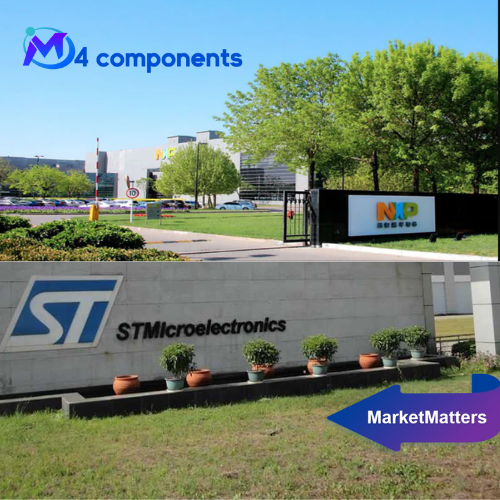STMicroelectronics Announces Agreement to Acquire NXP’s MEMS Sensor Business for Up to $950 Million in Cash
On July 24, STMicroelectronics (ST) announced an agreement to acquire NXP Semiconductors' MEMS sensor business for up to $950 million in cash. The deal includes a $900 million upfront payment, with the remaining $50 million contingent upon achieving technical milestones. The transaction is expected to close in the first half of 2026. Key assets include automotive safety sensors (covering passive airbag systems, active vehicle dynamics, and tire pressure monitoring sensors) and industrial pressure sensors/accelerometers. The acquired business generated nearly $300 million in revenue in 2024, and its high gross and operating margins will significantly enhance ST’s financial performance while increasing earnings per share post-closing.
Marco Cassis, President of ST’s Analog, Power, Discrete, and MEMS Group, emphasized that the acquisition will strengthen technological complementarity in automotive safety and industrial domains. By integrating NXP’s leading IP, R&D teams, and customer networks, ST will consolidate its sensor leadership across automotive, industrial, and consumer electronics markets. The combined technologies will leverage ST’s vertically integrated manufacturing model—spanning design, fabrication, testing, and packaging—to accelerate innovation cycles and enhance customization flexibility. This acquisition aligns with the accelerated growth forecast for automotive MEMS inertial sensors, positioning ST to further expand its competitive advantage.
For NXP, divesting its MEMS business potentially signals a strategic refocusing on core competencies, enabling capital redeployment toward R&D and expansion in higher-potential segments. The transaction will reshape MEMS sensor market competition: ST’s enhanced capabilities and scale may compel rivals to accelerate innovation and business restructuring. This could drive industry-wide advancement toward greater efficiency and sophistication while creating new collaboration and competition opportunities across the supply chain, ultimately fostering synergistic upgrades throughout the ecosystem.









